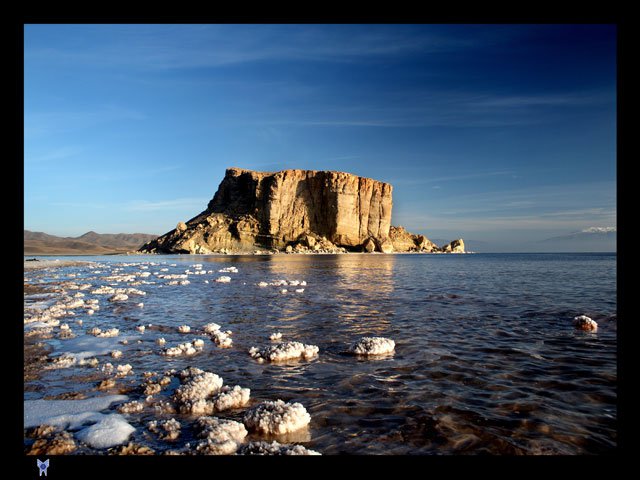UNEP official cites main causes for shoaling of Lake Urmia

By Sara Rajabova
As the primary causes of the Lake Urmia shoaling, the United Nations Environment Program (UNEP) has cited the diversion of inflow rivers and construction of dams, as well as climate change such as decreased precipitation.
"Regulating dam construction as well as better monitoring of river diversion is needed," UNEP's chief of Division of Early Warning & Assessment, regional coordinator Ashbindu Singh told Trend news agency.
Illegal use of water flowing into the lake for watering by the rural population, construction of dams and illegal objects on its banks, are among the problems contributing to the drying of the lake.
"A study conducted in 2010 reports a range...that anywhere from 2 600MCM to 4 200 MCM would be necessary to maintain the lake. This study also points out that a larger inflow would be needed during the beginning of the recovery phase as opposed to static inflow rates throughout the recovery period," Singh noted.
Singh said that there have been some suggestions of diverting surrounding water bodies to Lake Urmia since the ultimate goal is to bring more water into the lake.
"Water bodies that have been suggested for such a project include the Zab River, the Araz River and the Caspian Sea," he said.
"Of course, obstacles in this situation would be cost of the project, feasibility, time it would take to transfer the water, and negotiations with the countries that are home to those water bodies," he added.
The UNEP has allocated $135 million to Iran to resolve its environmental problems with shoaling at Lake Urmia.
The Iranian government allocated $900 million for this purpose in September 2011.
A project to direct 600 million cubic meters of water from the River Araz into Lake Urmia was launched during a visit by Iranian President Mahmoud Ahmadinejad and members of the government to Tabriz in 2010.
In November it was reported that Iran could benefit from Azerbaijan's assistance in saving its drying Lake Urmia. Azerbaijani Minister of Ecology and Natural Resources Huseyn Bagirov said that if Iran wants to use water from the Araz River to fill the drought-stricken Lake Urmia, it must coordinate this issue with Azerbaijan.
However, chairman of the State Committee of Land and Cartography Garib Mammadov believes that the use of Araz River waters to fill the shrinking Lake Urmia in Iran would have a negative impact on the environment in Azerbaijan.
He said changing the course of the Araz River cannot be a topic for discussion. "It will negatively affect the areas along the river both from an environmental and agricultural point of view," Mammadov said.
According to official statistics, 70 percent of the water surface of Lake Urmia has dried up. At present, a liter of water contains 400 grams of salt.
The area of Lake Urmia is about 6000 square kilometers. The lake's drying up has an impact on the flora and fauna of the region.
Speaking of environmental consequences that Iran could face if the lake eventually dries up, Singh noted a few such consequences.
Among the mentioned ones were collapse in the lake's food chain, loss of wetland habitat and the biodiversity loss that implies alteration of the local climate.
"In areas where the lake dries, it leaves behind salty soil. If the lake were to dry completely it would leave behind a vast salt bed which could not support agriculture and would most likely inhibit natural vegetation growth as well," Singh said.
"The salts could also be susceptible to "salt-storms", much like dust storms, and cause negative health and environmental effects not only in the immediate area of the lake, but also in more distant lands depending on how far the salts were carried," he added.
Besides, recently the Managing Director of the Iranian National Institute for Oceanography Vahid Chegini said that if Lake Urmia dries, sand and salt storms will be observed on a quarter of Iran's territory.
According to Chegini, in this case an environmental disaster would occur in the provinces of Mazandaran, Gilan, Zanjan, East Azerbaijan, West Azerbaijan, Ardabil, Tehran, Qazvin and others.
Also, according to recent reports, 50 villages are completely abandoned and empty due to the drying of Lake Urmia.
Those around the lake fear a fate similar to that of the population surrounding the nearby Aral Sea, which has dried up over the past several decades. Disappearance of the Aral Sea has been an environmental disaster, affecting people throughout the region with windblown salt-storms. The population surrounding Lake Urmia is much denser, putting more people at risk of an adverse impact.
Here we are to serve you with news right now. It does not cost much, but worth your attention.
Choose to support open, independent, quality journalism and subscribe on a monthly basis.
By subscribing to our online newspaper, you can have full digital access to all news, analysis, and much more.
You can also follow AzerNEWS on Twitter @AzerNewsAz or Facebook @AzerNewsNewspaper
Thank you!
